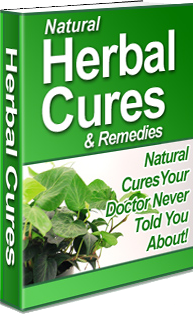FDA Adds Heart Attack and Stroke Warning to Some Painkillers – Try This
BY ANH-USA
Why did it take the FDA so long to warn consumers about these increased dangers? And why, despite these new warnings, does the agency seriously understate the risks?
Earlier this month, the FDA announced it would be strengthening its warnings on non-aspirin nonsteroidal anti-inflammatory drugs (NSAIDs), updating what is already printed on many NSAID labels about the drugs’ increased risk of heart attack or stroke. The updated labels will include language which warns that these serious side effects can occur as early as the first few weeks of using an NSAID; that the risk may increase with longer use of the NSAID; and that the risk appears greater at higher doses.
NSAIDs are typically used to relieve the pain or fever that results from a variety of conditions. Some of the brands that will have the updated warnings include Celebrex, Advil, Aleve, and Daypro.
This half-hearted, much-too-late admission by the FDA of the dangers of NSAIDs is hardly enough to protect Americans from the well-documented dangers of this class of drugs, as well as other common over-the-counter painkillers such as acetaminophen (i.e., Tylenol). Throughout the years, we’ve documented the scientific evidence showing how deadly these painkillers can be:
- One study conservatively estimated that 107,000 people are hospitalized each year for NSAID-related gastrointestinal complications and “at least 16,500 NSAID-related deaths occur each year among arthritis patients alone.”
- Another study showed that patients who take NSAIDs have a 90% greater likelihood of dying from all causes.
- Daily or long-term use of aspirin doubles the risk of internal bleeding and does not reduce heart attack risk for people with no history of heart problems.
- By the FDA’s own calculation, acetaminophen—the active ingredient in Tylenol—was the leading cause of liver failure in Americans between 1998 and 2003, and there’s no reason to think that this has changed in the years since. Despite this fact, the New York Times published an article blasting nutritional supplements, specifically green tea extract, for causing liver damage—without even once mentioning the damage done by acetaminophen! In the same way, the FDA has left acetaminophen out of this latest warning. Is this because of industry pressure? It is hard to see any other reason.
- Every year, 78,000 people go to the emergency room from acetaminophen overdose, whether accidental or intentional. The problem was so bad that the FDA asked doctors to stop prescribing any medication that has more than 325 mg of acetaminophen per dose. Of course, this ignores the fact that if consumers think the prescribed dose isn’t cutting the pain, many will think nothing of taking an extra tablet or two.
- A study published in JAMA Pediatrics found that Tylenol taken by women during their pregnancy could raise the risk of ADHD and similar disorders in their children by up to 40%. Another study showed that women taking acetaminophen during pregnancy increased the risk of their children having serious behavior problems at age 3 by 70%.
 Considering this evidence, it’s outrageous that the FDA has not been more vigilant in making these products safer—or, at the very least, included acetaminophen in its updated warnings— especially given how widely these products are used both for everyday purposes and for the millions of Americans with chronic pain.
Considering this evidence, it’s outrageous that the FDA has not been more vigilant in making these products safer—or, at the very least, included acetaminophen in its updated warnings— especially given how widely these products are used both for everyday purposes and for the millions of Americans with chronic pain.
The good news is there is research and clinical evidence supporting natural solutions for pain that are non-addictive and cost-effective. You can see our past coverage for a more comprehensive list of what has been studied, but here’s a short review of some of these alternatives to NSAIDs.
(Note: These options are meant to start a conversation between you and your integrative doctor on natural alternatives for chronic pain.)
Dietary supplements
- Sulfur-containing MSM (methylsulfonylmethane) not only provides pain and anti-inflammatory relief for osteoarthritis, but can also be effective for hay fever and other allergies. As many of us do not get enough usable sulfur in our diet, MSM is offered in powder as well as supplement form, which also facilitates the larger doses that may be necessary for pain and allergy relief.
- Turmeric, ginger, boswellia, and bromelain exhibit remarkable anti-inflammatory properties (bromelain should be taken at high doses on an empty stomach, as explained at LEF.org).
- Cayenne cream reduces substance P, a chemical component of nerve cells that transmits pain signals to brain.
- Cetyl myristoleateacts as a joint lubricant and an anti-inflammatory.
- The GLA in evening primrose, black currant, and borage oils can help arthritic pain.
- A member of our staff uses the Swiss Alpine herb butterbur for headaches and migraines (which can often be a side effect of prescription drugs). It also works well for hay fever. Because a toxic element must be removed from the plant, use a reliable preparation such as Petodolex.
- Samento (a form of cat’s claw, an herb), green tea extract, and zeaxanthin (and other carotenoids) can help manage rheumatoid arthritis. Natural alternatives are particularly important, given the serious—and sometimes fatal—side effects of prescription RA treatments.
Even if you already take fish or krill oil, higher-than-normal dosages are anti-inflammatory and may help you manage pain.
Injection therapies that stimulate your body’s natural healing mechanisms (all of the following can only be delivered when appropriate by a knowledgeable and skilled integrative physician)
- Prolotherapy is the injection of natural substances into chronically injured areas of the body. The injected substances themselves don’t do the healing; instead, they stimulate cell growth in the tissues that stabilize weakened joints, cartilage, ligaments, and tendons.
- Ozone therapy—a type of oxidative medicine that can also be used to treat viral and fungal infections—is the injection of oxygen gas (ozone) into affected areas. Ozone has been shown to deactivate bacteria, simulate oxygen metabolism, and activate the immune system.
- Oxygen therapy. Ozone molecules are composed of three oxygen atoms bound together. Oxygen molecules have two such atoms. Other forms of oxygen therapy, such as hyperbaric oxygen therapy (HBOT), may help as well by flooding wounded tissue with the pressurized oxygen it needs to repair itself.
- Prolozone therapy utilizes injections that are a combination of collagen-producing substances and ozone. As a fusion of prolotherapy and ozone therapy, it is sometimes described as a major advance on both treatments.



